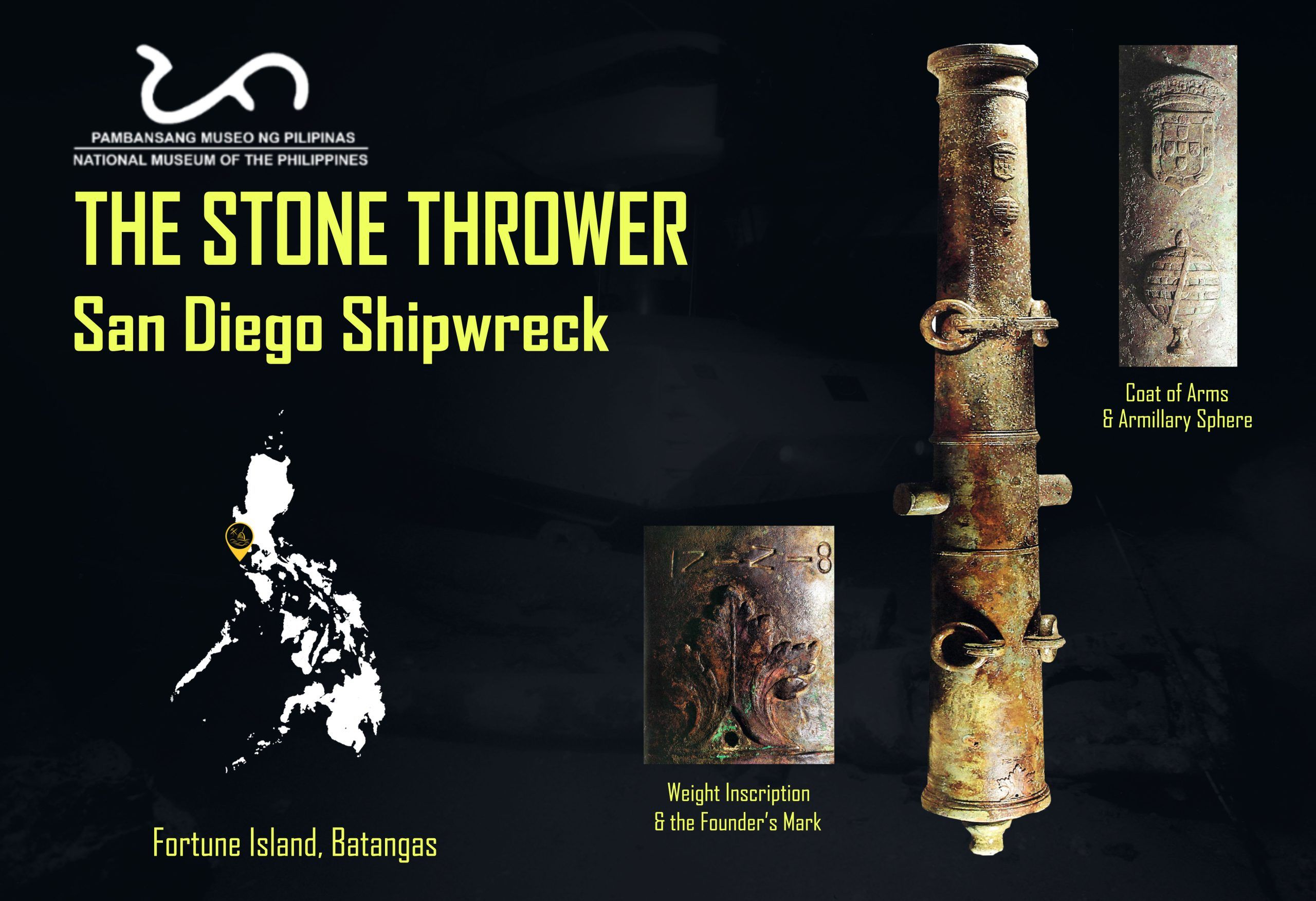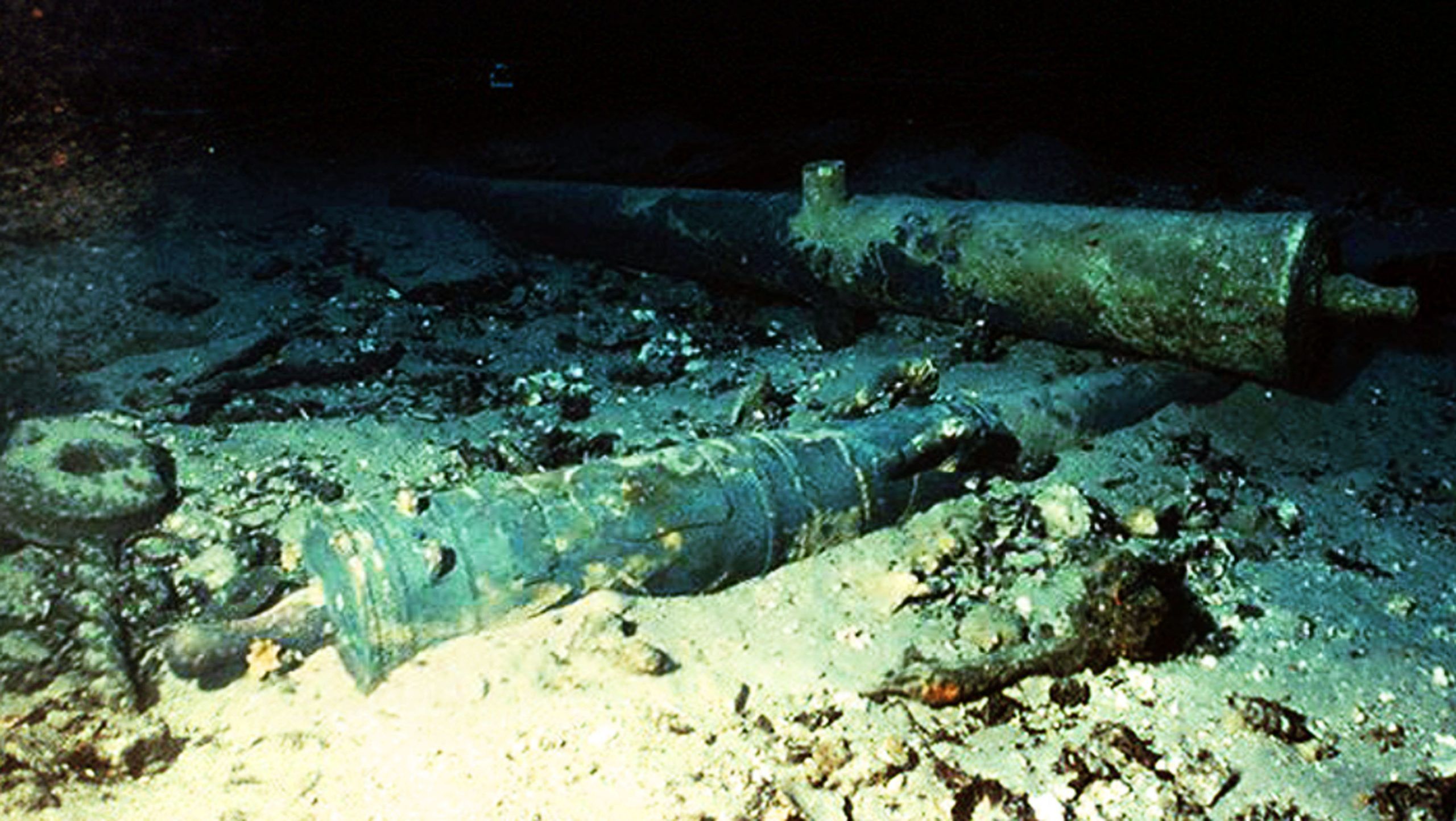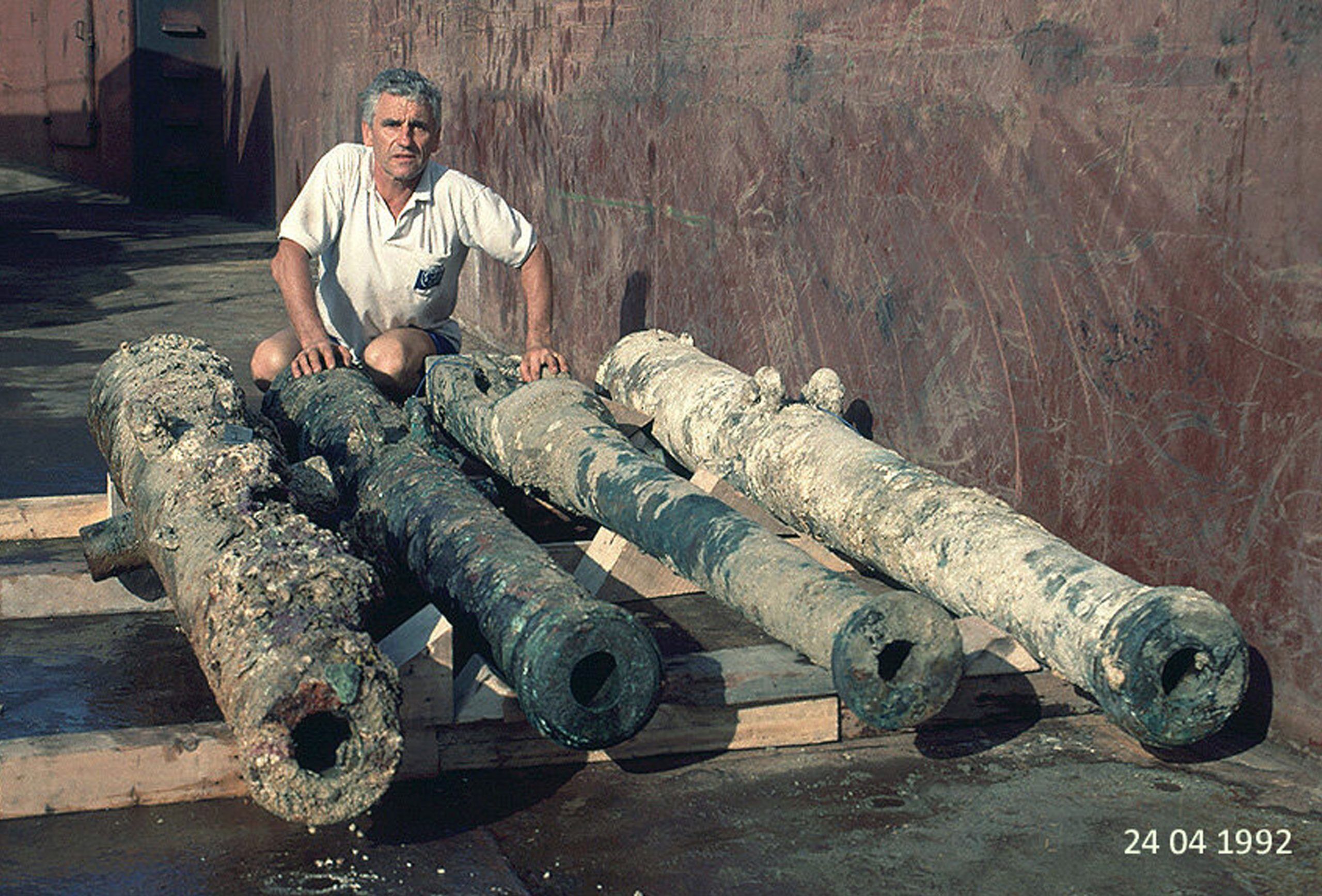The Stone Thrower Pedrero | San Diego

© NMP-MUCHD 2021, Poster and background image source: Desroches et al. (1996)

Casting process and different mould forms used in casting markings and decorations on artillery pieces . Image Source: ML Peterson (2014).

In situ image of bronze cannons from the San Diego shipwreck site in Fortune Island, Batangas. Image Source: https://www.gilbert-fournier.com/ancres, © G. Fournier, 1992

4 of the 14 cannons, recovered from San Diego. Image Source: https://www.gilbert-fournier.com/sandiego, © G. Fournier, 1992
This week’s #MaritimeMonday presents the bronze pedrero cannon of the San Diego, a Manila galleon that sank off Fortune Island in Batangas on December 14, 1600 after a naval encounter with the Dutch vessel Mauritius. The shipwreck was excavated between 1992 and 1993 by Franck Goddio’s World Wide First Inc. (WWF) in collaboration with the underwater archaeologists of the #NationalMuseumPH. Learn more about the story of the San Diego here https://tinyurl.com/y2h2n3te.
A smaller Portuguese breech-loading pedrero cannon was previously posted for #MaritimeMonday (https://bit.ly/museumcannon). Today’s feature is a large bronze muzzle-loading Portuguese pedrero cannon recovered from the same shipwreck.
This cannon has a typical slightly conical body type that is divided approximately in half by a central molding, short molded collar, and a relatively elaborate tailpiece. It measures about 2.57 m in length and has a bore diameter of 173 mm corresponding to a 5.5-kg stone ball. The two pairs of folding rings used to hoist the weapon are typical of the 3rd stage of the evolution of Portuguese bronze weapons from the 15th century Common Era (CE) iron mortar. Pedrero cannons are designed to fire only stone balls using small powder charges. At the end of the barrel are the two Portuguese emblems: the royal coat of arms, and the armillary sphere. On the breech are Portuguese style-inscriptions indicating the unit weight: 12-2-8, or 12 quintais plus 2 arrobas plus 8 arraties, equivalent to about 1,608 lbs or 738 kg.
This bronze piece has 4 ears or handles instead of the typical 2 found in other cannon types. Interestingly, these handles are also called Delfins de Asas, Dauphins, or Dolphins. This is because these handles, when present in most of early guns, were ornamented and cast to represent dolphins. It also appeared in other various forms, such as elephant heads and trunks, dragons, ropes, birds, or other animal or human figures.
Your #NationalMuseumPH is now open to the public with minimum health protocols. Please visit our newly upgraded ‘300 Years of Maritime Trade in the Philippines’ exhibition on the second floor of the National Museum of Anthropology Building. You may also opt to watch the virtual tour of the said gallery here: https://tinyurl.com/300YearsOfMaritimeTradePH. Please monitor this website and social media pages such as Facebook, Twitter, and Instagram for further information and booking arrangements.
#MarkingsAndDecorations
#Cannons
#SanDiegoShipwreck
#MuseumFromHome
#StaySafeStayHome
#BeatCOVID19
Poster and text by the Maritime and Underwater Cultural Heritage Division
© National Museum of the Philippines (2021)
inquiry@nationalmuseum.gov.ph
(+632) 8298-1100
